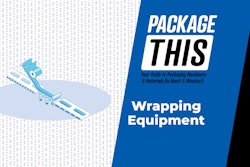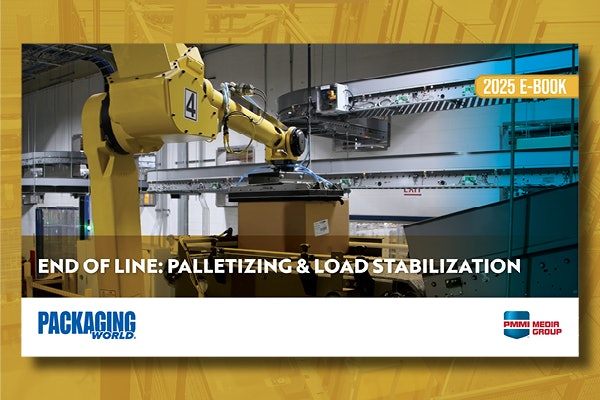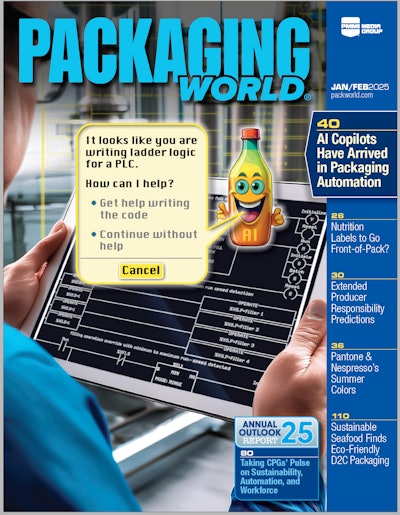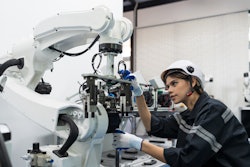Renowned keynote speaker and expert on marketplace disruption, Tom Morrison, president and CEO of Tom Morrison Associates discusses what was shaking up the packaging and processing industry before COVID as well as how the past year added some new, potentially permanent disruptions. He lays out a classic good news/bad news evaluation for the next 5-10 years. Economically, the industry finds itself in one of the largest booms in our history while facing the lowest amount of qualified employees to handle the workload necessary to meet demand. Automation, ingenuity and an ability to remain nimble remain keys to success, and Morrison offers guidance on staying up to speed with a constantly evolving landscape.
To subscribe and find more unPACKED podcast episodes, visit pmmi.org/podcast.
 | Read the full transcript below |
Sean Riley:
I'm excited to have you. So I sat in on your session at the ELC, the Executive Leadership Conference, and you kind of highlighted industry disruptions that were occurring before the pandemic, but then they involved in the permanent disruptions as this pandemic unfolded. It included topics like touchless technology, consumer habits, decreasing labor availability, working remotely, cybersecurity, topics like that. Now, when you look at all that change and that disruption and all the noise we are experiencing in the marketplace, what are some other areas that might be slipping through the cracks which could prevent companies from really thriving and doing their best business in, I don't know, say the next five, eight, 10 years?
Tom Morrison:
So, one of the key things I tell any company is that don't look too far down the road. I always take that comment back to when Twitter first came on the scene and it kind of unveiled and grew like crazy. I remember listening to someone ask Jack Dorsey, who's the CEO of Twitter, "Jack, what do you see Twitter at in two years?" He basically looked back and says, "This thing moves so fast, I don't know where we're going to be in six months. We're just going to be agile and lean in how we move, and we're going to react to the marketplace as well, trying to still leave and drive the change that causes our company to grow." I think companies have from this moment of COVID, that's the one thing that will keep them from moving with the market is looking too far down the road. There's a huge issue that we got going on right now. The numbers economically wise is showing that we're in the beginning stages coming out of COVID to still be in one of the largest economic booms next eight to nine years in our history. We're demographically set up for that and economically as well. But we're also set up for the lowest number of employees we've ever had in the marketplace that are qualified to make that change. So that's the dichotomy of disruption that companies are in the midst of is how do you grow your company 30% to 40% in the next 10 years with adding maybe 5% more employees? And companies are going to have to figure that out. Now, obviously the answer we'll talk about later on is certainly automation. That's going to be the huge thing, and automation doesn't mean replacing your employees with robots. Automation means sticking things in your plant that actually take an employee from being 100% capacity to 300% capacity without using any more hourly rates for them. So lots of innovation and ingenuity going to come through that process. And it's going to be fun to watch how companies innovate in that process to see how they can grow their companies without a whole lot more employees.
Sean:
That's an interesting point that kind of, at least in that this might just be me thinking that way, but it doesn't seem to jive with the American way of thinking where you have a five-year plan and a 10-year plan. And it was sort of the traditional way that we've done business here. How do you see companies? Are they going to be nimble enough to adjust to that? Or are they prepared to adjust to that? Or is it just one of those cases where they're going to have to adjust to that?
Tom:
Well, I think the key is you have to look out five years and even 10 years and at least have a general, common thread of what do we want to be as a company five years from now? It's the how you get there that's going to be the big issue. That's what's going to change over, and over, and over again. You want to be a global leader in X division or X type of product or X type of services, but how you're going to get there could be totally different because government regulations are changing on a dime now. We can see with executive orders and stuff. We don't know how that's going to shake out. You got the demographic shift and the consumer buying habits now, because we're also interconnected. Consumer buying habits changed so fast. I mean, I think I go back to my presentation where it took the television 75 years to get to 50 million viewers. Well, it took Angry Birds, the video game, it took 35 days to get to 50 million users. So the consumer reacts so quickly because when one post comes out recommending a product that spreads virally, millions of people see it and millions of people shift their buying habits potentially. And that one moment, which could be bad for the company they're shifting from. So that's why I tell people you need to be talking quarterly about your plans so that you can shift with the market. And the key behind that, Sean, is to have the right metrics that you're tracking in your company that can tell you when to shift and shift fast and where to shift.
Sean:
Interesting, so like you said, you got to still need that plan, but you have to be nimble and kind of flexible to how it plays out.
Tom:
Absolutely. Here's what COVID did. COVID magnified the weaknesses in all of our plans. It magnified the weaknesses in our supply chain. It magnified our weaknesses in an ability to be digital. I mean, we've been shouting, you got to get digital over time, over the last 10 years. And so many companies still push back against that and still had paper. They had analog, they had paper charts instead of digital charts. And COVID said, "That ain't going to work." And everybody had to shift overnight to digital virtual meetings, remote work, all these things that were kind of slow changing processes that the baby boomer generation didn't buy into as quickly as the younger generation, but now they had to buy into it. And so now they're kind of fortunate here and that's the cool thing about they started trying these things and like, "Wow, we worked six months from home and our company, some of them were more productive than they ever have been," which is kind of amazing.
Sean:
Yeah. That's an interesting point that I'm probably going to touch on later, but I'm kind of circling back. You spoke about the labor shortage and we talk about it. We're in a manufacturing industry and we talk about it all the time, where there's all these pretty great careers that you could have in this industry that are just going unfilled, despite there being unemployment, just because there's not a skilled workforce to meet them. So when you speak of the labor shortage we're experiencing and the need to automate as fast as possible to kind of keep up to it, what are the steps that companies should be taking to kind of maximize their output?
Tom:
One of the things they should do immediately is they should go to each department and have some incentive they can share with their departments of how they're going to reward them if they can come up with the ideas and solutions to automate in any way that can up throughput at any level in their particular division. Because the common theme that I hear when you say, "Let's automate things," is they say, "Well, it's easy to automate if you're doing the same thing over and over and over. It's not easy if you're doing different things or loading different parts in a furnace or in a place." And so what I've seen in our membership is it's not about actually automating the whole process. I just came from a heat treat plant where the owner was telling me that I was watching this one particular worker and he used to do these four steps to push throughput and getting metal to go through this machine. They added some automated procedures where all he does is stick them in the front. And the automation takes it through the four parts and it tripled his output just by putting machinery and automation. But it didn't remove him from the process. If he just worked it, so it tripled his automation. So that's what I think companies should be doing right now is going to their departments and saying, "You know what? There's smart cars, there's smart phones, there's smart houses. We need to be a smart company." So we're challenging each department to come up with ways that they can automate without removing employees. When you automate, it's not about replacement, it's about expanded capacity in your department without removing any people. You may be doing it yourself, give you two robots with a joystick. And now you're putting out 300 units per hour instead of 100 units per hour. So that's step number one I think they should do is really be digging into their own people because they're working the process every single day.
Sean:
Yeah. And that's the interesting thing that's always kind of been tied to automation is that you hear automation and people think the robots, like you said earlier, coming in and they're going to take jobs and we're not going to have jobs as a result of it. But we're already noting that there's jobs available that we're trying to fill. There's a labor shortage and B, you can work alongside them to kind of make your processes easier and more efficient.
Tom:
Right. A lot of workers, especially manufacturing on the line level, their self-worth is in the knowledge and physical makeup of what they do with their hands. By putting this stuff on the fixturing or working the machines, that's where they find their self-worth. When you say, "Look, all you're going to have to do is take this joystick and move this robot," the robots doing the work, where they found their self-worth. So the immediate thing is that's not as worthy as it was before, but it really is because now you're doing triple the work with a joystick, or however you want to call that. That's the big education process for people to say your worth now is coming more from using your brain than using your hands. But that's a big education process that they have to kind of walk through with their people. So there's not a threat or fear that I'm working my way out of a job.
Sean:
That's interesting. You have to reframe what signifies, I guess, success in your daily work routine. Yes, you're not doing as much with your hands, but you're doing four times the amount or something like that. And that's an interesting way to frame it.
Tom:
A common question I tell people to ask a line person or a management team is to say, "Look, we have decided that we need to grow our throughput 100% without adding anybody else to your division. Do you think that's possible?" And they're obviously going to say, "Well, no," and automatically you put them on the front stage of, well, then we need to automate because now they know that they really do need the humans, but they're going to have to implement robotics, artificial intelligence, and automation into the system to get from 100 units an hour to 200 units an hour without adding more people. So it's all about the conversation and the openness of being transparent, I think.
Sean:
Okay. So we kind of touched on it, but most companies have never had to deal, especially in this sector with remote workers as an active part of their workplace. I actually have two points I want to touch on this, but I guess from the one aspect, how do you reformat the higher ups in the company to understand that, like you said, for the past year, that the company may have actually grown, even though everybody was not in the office. And now when all this clears up, you want to bring everybody back into the office. How do you reframe that to say to people who have been working remotely that we need you back in here and painted in a way that is appealing to them?
Tom:
Well, it's all about culture. And so the management can't look and say, "You're coming back in because it doesn't work," because society has proven that it does work. I mean, our association staff work from home three months in a row, solid, not one day in the office. And we were just as effective if not more from working remotely, but there are some elements of team chemistry that happened when you're together. Our staff, and I've heard of the other staffs that says, "You know what? I like working from home, but I missed the interaction." So what I think most companies that are successful are going to go to a hybrid model where you've got, I think kind of the perfect model is Monday, Tuesday, and Thursday is in. Wednesday and Friday, you work from home. And those that find that fine balance because HR is going to take on a massive role now because who gets to decide, who's going to get to work home remotely all the time? As soon as you let one person work remotely and another person that you want to have in the office that says, "I've been working fine for the last four months from home. Why do they get to work from home? And I don't?" So you're going to have to walk through and navigate that prism to find out what your policies are going to be. But I think you just want to look at being fair. It's got to be for the company's best interest while taking because there's some people legitimately that just have fears of being in the office around 50 people. If you have 50 employees all the time, the good news is, and all this is that if you go to a three-two kind of hybrid model, you don't have to grow your office space. One of the biggest things I saw this a couple of years ago was going on Chick-fil-A, their Atlanta office and Kennesaw their national offices.
And they said they were able to almost double their employees ship because they started having at-home days. And instead of having an office for everybody, everybody was issued laptops and they had these Starbucks kind of remote work stations in the office. So you could come in and work from just about anywhere and be with your team, but you work three days on and two days off. And they were able to grow because they needed to grow up or out or something, but they needed to grow because they were hiring so much. And so they went to a hybrid remote work model years ago and they said it worked out beautifully. So I think that's what companies are going to have to really start working through is some kind of hybrid. Every company has a place in the pendulum of that change, where employees will feel safe and happy and the company's profiting the most. They just have to figure it out what's going to work for their particular organization.
Sean:
That's interesting. I don't want to say the older industries, but industries that have been around and are kind of stuck in a certain pattern and stuff like that, where they haven't evolved to this any type of remote working before this, sometimes the employees might feel, I guess, not trusted if they weren't allowed to work remote. So like you said, it does always involve building a culture where everybody kind of feels like on a level playing field.
Tom:
Well, you said the keyword. It boils down to giving up control and absolutely putting everything again on trust because here's a couple of key facts on remote work. You're not paying for hours' work. You're paying for projects finished and productivity. And you do that by giving the proper metrics. So when you're sitting in a meeting on Friday and you're talking to people that work remotely, their metrics tell you that they're being productive and deadlines being made tell you that they're being productive. So I mean, if someone's meeting all their deadlines and meeting all their checklists and their metrics are all in line, you should have no issue with them. But when someone's not meeting their metrics, they're making up excuses for not being done on time or the deadline.
Tom:
Now you've got a challenge that you just have to meet just like you would with an unproductive employee working live all the time, but they go into a remote work setting too. It's about creating a personal space for that worker to work effectively in the home. And you need to look at that personal space. What is dress code? You don't want to show up in a t-shirt in a live meeting with a bunch of executives around the country. So you want to make sure you set up the proper parameters and give them the freedom to create a comfortable workspace that meets with the company's guidelines of how to do that.
Sean:
Right. So I guess then circling back to the remote workers for kind of a manufacturing operation type thing, what are some of the key elements companies have to think through to make it effective from a workflow perspective as people in manufacturing plants and stuff like that have had to move around and adjust their schedules as a result of the pandemic? And some have had to work different shifts and remotely and stuff, are there key elements that companies have to think through to make that the most effective?
Tom:
Here's the one thing that you got to look at. If your company is 100% in the cloud and automated from an information flow standpoint, that is all you need to be able to work remotely effectively, literally. Because I mean, whether I'm sitting at my desk or in a Starbucks or at home or in The Bahamas, somewhere on a beach, I can log in and I can do my accounts payable or accounts receivable, or look at process orders, your CRM system, CAD drawings, no matter what. That's the key right there because many manufacturing plants are still kind of in the older technologies that is paper-based, analog based, and kind of pushing things along. Here's what we did. Our offices used to not be in Nashville. They used to be in Jacksonville, which a lot of hurricanes pass by and shake our hand and say hello. And we went through a process eight years ago to say, what happens if a hurricane wiped out our offices and we were not able to serve our members? What would we do? I mean, it literally wiped us out. So we proceeded to make everything that we do cloud-based with Dropbox, our emails, all of our websites, everything. Nothing is physical based. And so we could literally be wiped out and go buy a laptop, log into our system, and we would be working from the local Starbucks 24/7 if we had to. And so I think that's what companies have to do now is ask themselves, how can we get to be so digital that it doesn't matter where anyone sits remotely, they can do their job? Once you do that, then everything else just kind of falls in place with policies and procedures.
Sean:
That's a unique perspective and a unique way to paint that post pandemic sort of where we're trying to get to a picture. And I know for particularly the younger generation, they are more comfortable and seem to be used to that nimbler remote environment. So from a hiring standpoint, it seems like something that is important for a company to kind of remain relevant going forward.
Tom:
Right. Well, and when you look at information flow in a company, there is so much time wasted waiting for information or going to get information, going from one side of the plant to the other to get a folder or a chart or something, and looking for a customer's order. I remember one of our members where they found out we're losing a lot of time in a heat treat plant was looking for a box of parts that are being heat treated and wondering where they are in the process. And you'd run around the plant looking for the proper PO that showed you that that was the deal. So what they did was they created ... you know the little things that you plug in the wall, the little blocks that you charge your phones with?
Sean:
Sure.
Tom:
They took those and they created little MiFi hotspots all around the plant and every 10 minutes it would refresh. And they had a 2D barcode on every PO for every order. And he issued everybody an iPhone that worked on Wi-Fi with no cell service in the plant. And you could literally go on the app and look up and find out exactly within a second when you punched it, where that order was in the plant, and you could go right to it. So that's the kind of innovation I think we're going to want to see in manufacturing plants from an information flow, product flow, and getting an order from receiving to shipping with the least amount of human touch you can. The people that do that are going to be the ones that really win the most profits, most productivity, and have less stress in their operations.
Sean:
I like that. And that's a great way to paint an example, a simple explanation or a picture for the listener of it's as simple as giving everyone an iPhone that can track this product versus chasing a piece of paper. Like you said, which is what people have done for a hundred years.
Tom:
Everybody thinks automation means this grandiose process, and it's not. It's about taking a process and say, how do we get this information or this part from there to there with no human involved? How do we make that happen? Or how do we locate something faster? So it's looking at every step of your operation to remove as much waste that doesn't need human touch, if you could create something to do that.
Sean:
Awesome. Well, I see I've taken him about 20 minutes of your time, which is more than I could expect from you, Tom, as you're a very wanted speaker. So I appreciate that you took some extra time. You came on and spoke for us at the ELC, and then you even added a little additional time for us here to kind of give us a little bonus content that we can share with our members and the industry in general. So we really appreciate you coming on here, Tom.
Tom:
Sean, always glad to do it and love being at the PMMI events. And I look forward to being invited back at some point in time in the future.


























